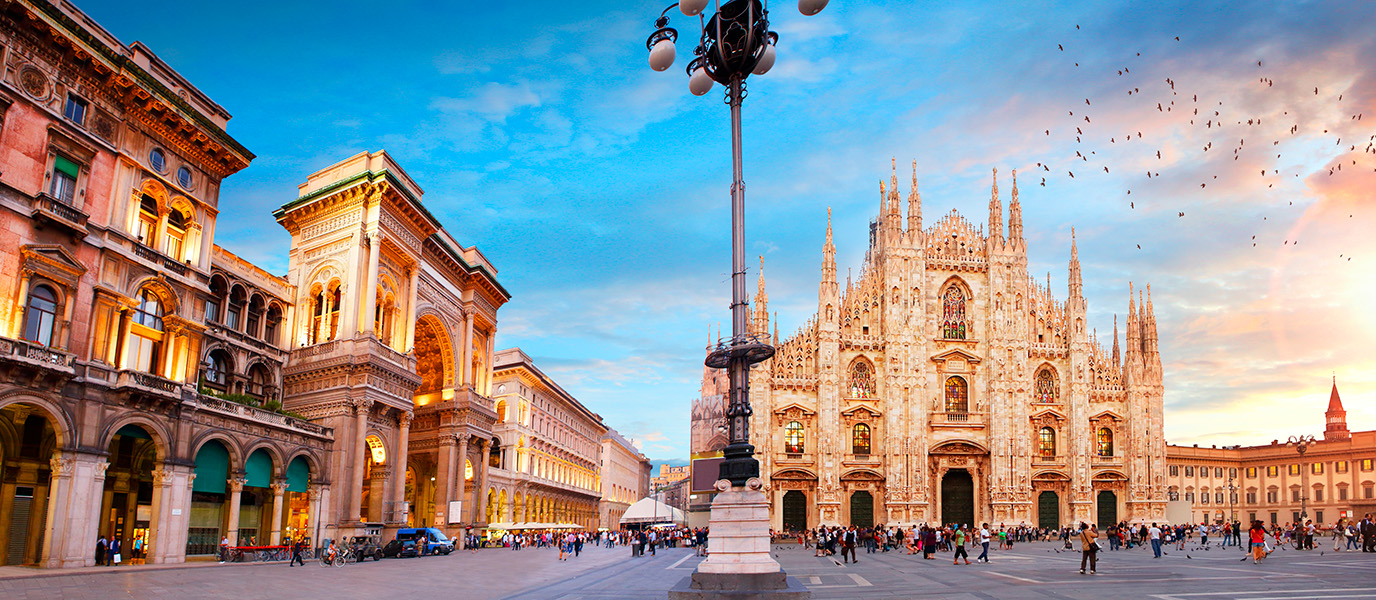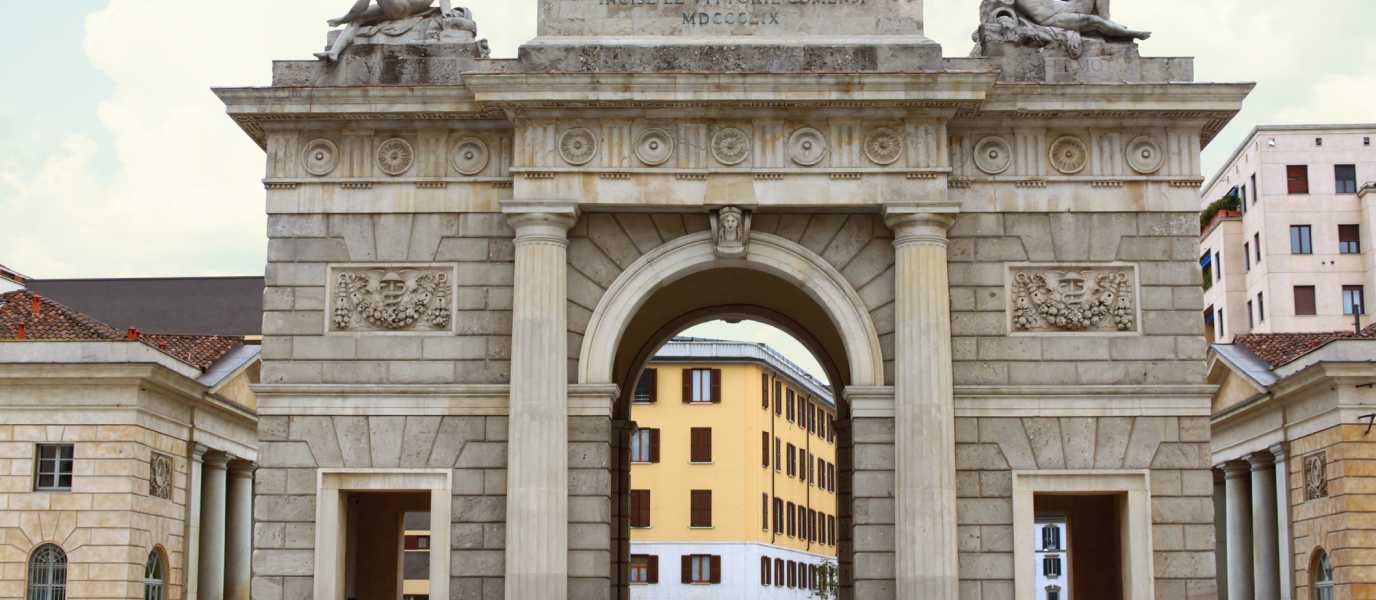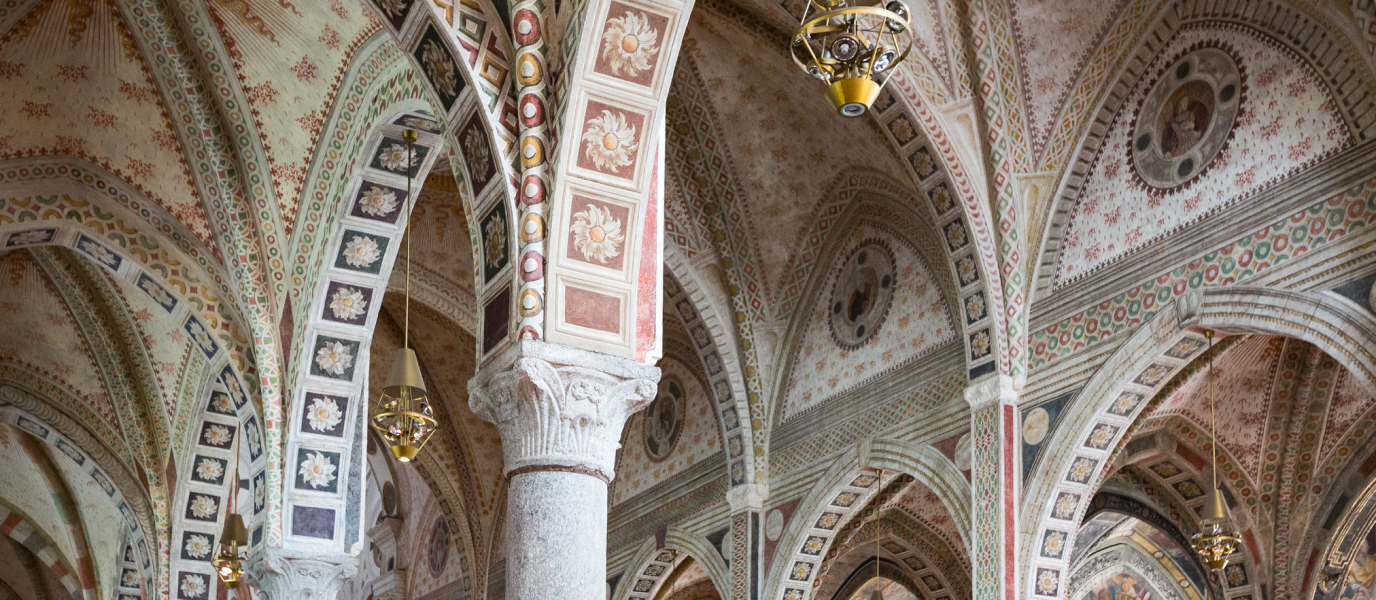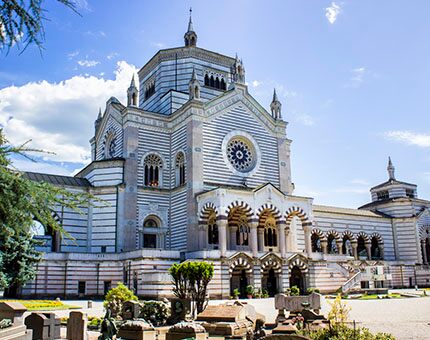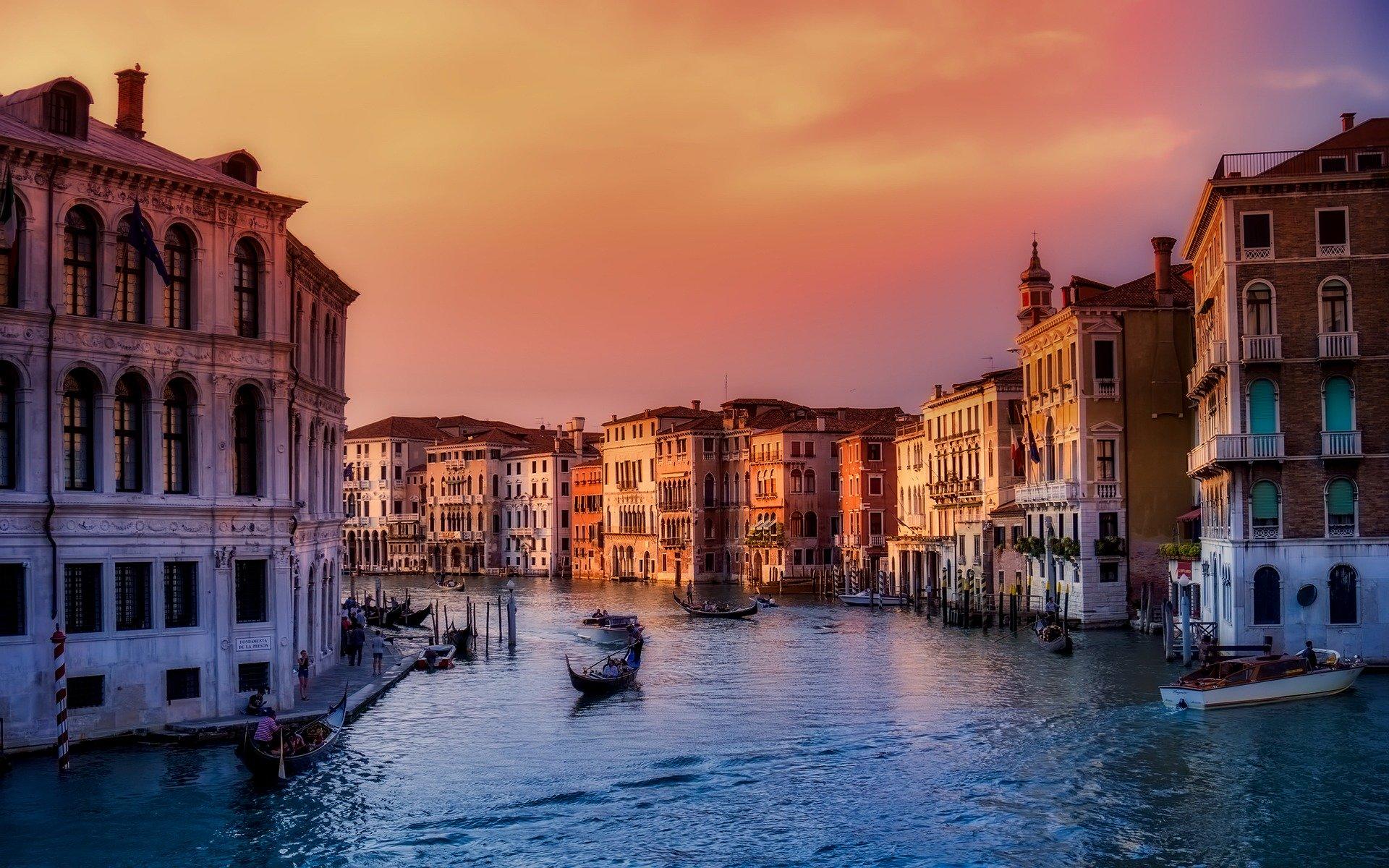The light becomes more intense when you enter the Piazza del Duomo, the centre of life in Milan where you’ll find important attractions such as Galleria Vittorio Emanuele II (internal link) or the Royal Palace. The sun’s rays reflect off the cathedral’s sleek façade, producing an almost hypnotic effect.
The perfection of this architectural wonder is a delight for the senses. The Milan Cathedral is one of the city’s main attractions, making us aware of its vast artistic heritage. It is the result of five centuries of tireless work, a true symbol for the city.
The star of the Piazza del Duomo is the Milan Cathedral.
The word duomo comes from the Latin domus and means house, but in the sense of the House of God. It’s often used in Italy to refer to a city’s main church. The Duomo of Milan lives up to its name and dominates the centre of the square.
Its 157-metre length structure can hold a total of 40,000 people, making it one of the largest Catholic cathedrals. It took a long time to build and this has allowed it to combine different styles, giving it a unique appearance.
It occupies the site of the former Basilica of Sant’Ambrogio, a 5th-century temple that was destroyed in a fire in 1075. Work on the building began in 1386 by order of Archbishop Antonio da Saluzzo and under the rule of Gian Galeazzo Visconti, who wanted to renovate the whole area and enthusiastically welcomed the cathedral project. He wanted to adopt a radiant Gothic style, which was typical in France. Therefore, one of the first architects to take charge of the construction was Nicolas de Bonaventure, a French architect who set the tone of the building. Over the years, a very special fusion of International Gothic and Lombard architecture emerged.
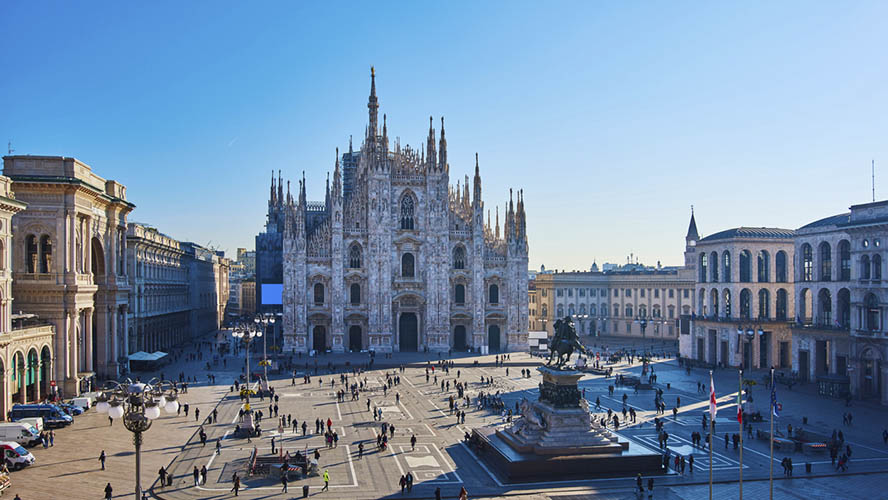
It should be noted that there were difficult times due to a lack of money and structural problems. Even Leonardo da Vinci, during his stay in Milan in 1480 at the service of Ludovico Sforza, tried to offer solutions to the dome conundrum with several sketches that are preserved today, although they weren’t implemented in the end.
In the early 16th century the dome and its internal decoration were completed, but the main issue, the façade, remained unresolved. After several unsuccessful attempts, Napoleon Bonaparte ordered the architect Carlo Pellicani in 1805 to complete the façade, and Milan Cathedral was finally given a façade in keeping with its splendour.
The finishing touches continued to be completed up until the 20th century, with the work being officially completed in 1965. A gargantuan effort for a great work of art that today welcomes its visitors in stunning fashion.
What you can’t miss at Milan’s Duomo
With its five naves, a central nave 45 metres high and four side naves, both the exterior and the interior of this temple are truly stunning. The external appearance is one of the first details you’ll notice, as the cathedral is clad in white marble with pinkish hues, brought especially from the Caves of Candoglia.
The visual impact of the façade is provided by the numerous pinnacles and turrets with sculptures that crown the building. At the highest point is the symbol of Milan, a gilded copper statue sculpted in 1774 by Giuseppe Perego, the famous Madonnina.
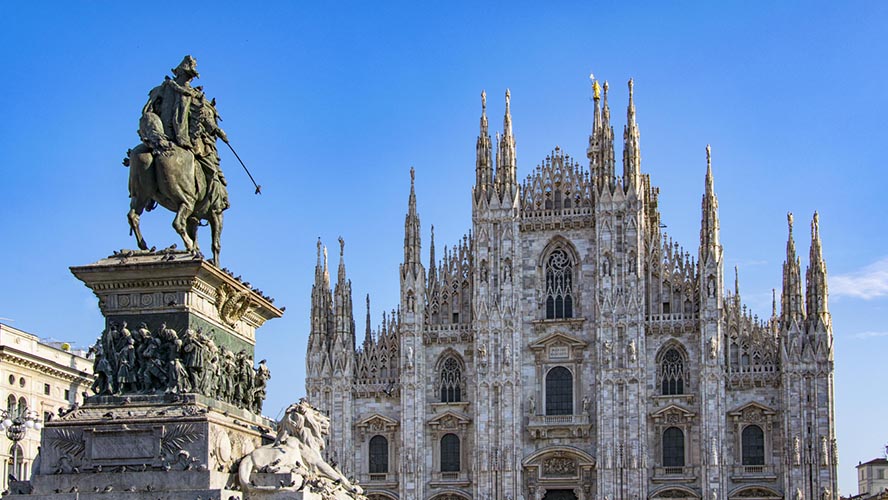
As for the interior, which is equally sublime, it becomes more welcoming and invites visitors to meditate. Once inside, there are several parts you shouldn’t miss:
- Its enormous pillars, with a unique design, provide the height of the central nave. Look at the canopies, which are topped with carved statues. Let the columns guide you to the altar.
- One of the most famous sculptures is that of Saint Bartholomew, sculpted by Marco da Agrate in 1562. This apostle was flayed alive and this is how the artist presents him to us, with his skin hanging around his body. It’s a truly chilling piece.
- Admire the beautiful stained glass windows through which the light enters the cathedral, decorated with scenes from the Bible. They create a beautiful and colourful spectacle.
- You can go down into the crypt, where you’ll find the chapel of Saint Charles Borromeo. As well as the saint’s remains, you’ll find the Cathedral Treasury, with Romanesque and early Christian objects.
- From the depths you can head to the heights, as it’s possible to climb up to the roof of the cathedral, which is one of the best experiences of the visit. The sensation of walking on the roof, which has been transformed into a panoramic terrace, is something you can’t miss. You’ll also have the chance to get a close-up view of the pinnacles on the façade while enjoying views of the city. You can go up the stairs or take a lift, for an extra charge.
- Look for the meridian line on the floor of the cathedral. It consists of a copper strip with the signs of the zodiac to the sides. Thanks to a small hole in the vault, every day at noon the sun penetrates and its rays indicate the month corresponding to the zodiac sign.
- Milan Cathedral houses a large number of funerary monuments, such as the one dedicated to Gian Giacomo Medici di Marignano, a superb Renaissance work of art by Leone Leoni in bronze and marble.
Altars, chapels, statues, paintings, altarpieces, and relics such as one of the nails from the cross of Christ are just some of the treasures that await you inside Milan Cathedral, a structure that will leave you speechless and that you can’t miss on your tour of the city.
Useful information:
How to get there.
- By metro: lines 1 and 3, Duomo stop.
- By tram: lines 2, 3, and 14, Torino (Duomo) stop; line 24, Dogana (Duomo) stop.
- Opening hours. Every day from 8 a.m. to 7 p.m.
- General admission. We highly recommend you book your ticket in advance on the Milan Cathedral’s official website. There you can find the different passes for your visit if you want to access the archaeological areas, the terrace, etc., as well as the different prices.






































































